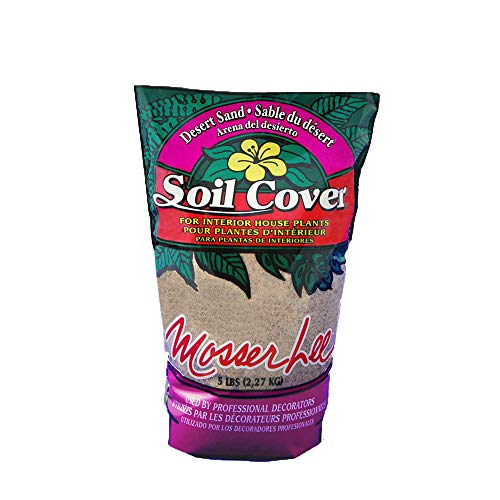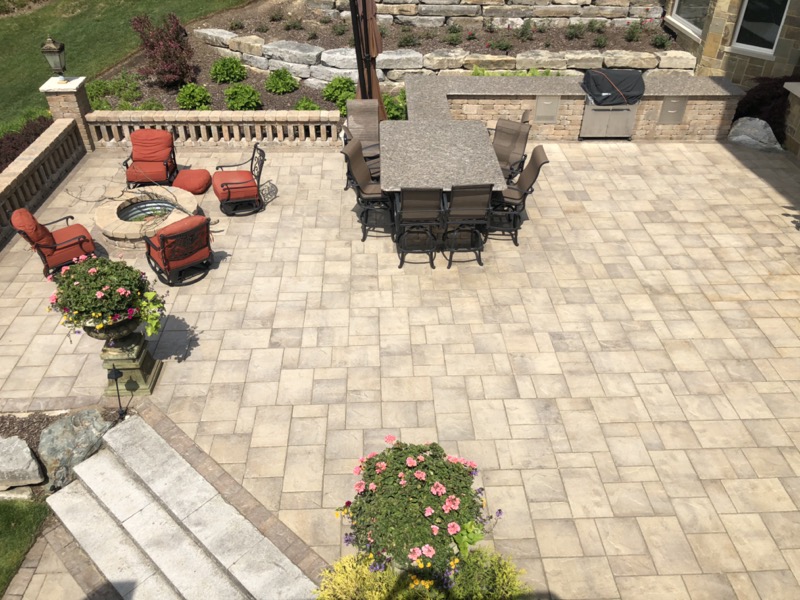Polymeric sand is a type of sand that is used in the installation of interlocking pavers, stone, or concrete pavers. It is a fine, dry sand that is mixed with a polymer (a type of plastic) binder. The polymer binder helps the sand stay in place and prevents it from being washed away by rain or water.
Polymeric sand is used to fill the joints between pavers and stones, creating a stable, secure surface. It is often used in outdoor applications, such as patios, walkways, and driveways, where it helps to prevent weeds from growing and keeps the pavers in place. It is also used in indoor applications, such as in the installation of tile floors.
Polymeric sand is easy to install and requires minimal maintenance. It is resistant to erosion, fading, and cracking, and it helps to reduce the amount of water and weed growth between the pavers. Overall, it is a durable and effective solution for filling the joints between pavers and stones.
- BaseGel is an innovative, super-absorbent polymer that replaces sand or water as...
- Cross-linked polyacrylate polymer absorbs up to 400 times its weight in water,...
- Light-weight and easy to use - is easily reversed if needed
- Improves the look of house plants by covering soil.
- Suitable for decorative use in clear vases, dish gardens and terrariums.
- Improves water drainage.
- Loosen heavy or compacted soil.
Different types of Polymeric Sand
There are several different types of polymeric sand available on the market, each with its own unique features and benefits. Some common types of polymeric sand include:
- Regular polymeric sand: This is the most basic type of polymeric sand, made from a mixture of fine, dry sand and a polymer binder. It is used to fill the joints between pavers and stones, creating a stable, secure surface.
- Sandstone polymeric sand: This type of polymeric sand is designed to match the color of sandstone pavers, making it a good choice for use in sandstone patios and walkways.
- Wetting polymeric sand: This type of polymeric sand is formulated to absorb water, which helps to activate the polymer binder and create a stronger bond between the sand and the pavers.
- Polymeric dust: This is a finer, dust-like version of polymeric sand that is used to fill smaller joints between pavers or stones. It is easier to work with than regular polymeric sand and can be used in applications where a more precise application is needed.
- Joint stabilizing polymeric sand: This type of polymeric sand is formulated with a special polymer that helps to strengthen the bonds between the sand and the pavers, making it ideal for use in high-traffic areas or in areas with extreme weather conditions.
- FLEXIBILITY, STRENGTH and BEAUTY: Ease your mind with revolutionary CERAMIC FLEX...
- EASY TO USE PACKAGING: Our bag’s NEW Easy Pour Handle makes carrying a breeze and...
- EASY INSTALLATION: Made with fine sand and a cement-free formula, DOMINATOR Polymeric...
- COVERAGE RATE: Using Google, search "DOMINATOR Polymeric Sand Calculator" to help you...
- COLD WEATHER WARNING: Do not apply if surface temperature is expected to be below...
- PROTECTS against oil stains and other spills while providing the ultimate UV...
- Breathe easy when applying DOMINATOR STONE+ sealer due to NO FOUL ODOR and LOW VOCs...
- Your money goes farther with this product! AMAZING COVERAGE RATE of 400 - 800 square...
Where you can use polymeric sand
Polymeric sand can be used in a variety of outdoor and indoor applications, including:
- Patios: Polymeric sand is often used to fill the joints between pavers in patio installations. It helps to keep the pavers in place and prevents weeds from growing between them.
- Walkways: Polymeric sand is also commonly used in the installation of walkways made from interlocking pavers or stones. It helps to create a stable, secure surface for walking and can be used in a variety of designs and patterns.
- Driveways: Polymeric sand can be used in the installation of interlocking pavers or stones for driveway surfaces. It helps to keep the pavers in place and prevents them from shifting or becoming unstable.
- Pool decks: Polymeric sand is a popular choice for use in the installation of pool decks made from interlocking pavers or stones. It helps to create a slip-resistant surface and can withstand the constant moisture and chlorinated water found around pools.
- Indoor floors: Polymeric sand can also be used in the installation of indoor floor tiles, such as ceramic or porcelain tiles. It helps to fill the joints between the tiles and creates a stable, secure surface.
Why polymeric sand is a popular choice
There are several reasons why polymeric sand is a popular choice for use in the installation of interlocking pavers and stones:
Durability: Polymeric sand is a highly durable material that is resistant to erosion, fading, and cracking. It helps to create a stable, secure surface that can withstand heavy traffic and extreme weather conditions.
Easy to use: Polymeric sand is easy to install and requires minimal maintenance. It can be easily swept into the joints between the pavers or stones and then activated with water to create a strong bond.
Weed control: Polymeric sand helps to prevent weeds from growing between the pavers or stones, which can save time and effort in maintaining your outdoor space.
Water drainage: Polymeric sand allows for proper water drainage, which is important for preventing standing water and potential damage to your patio, walkway, or driveway.
Aesthetic appeal: Polymeric sand is available in a variety of colors, so you can choose the one that best complements your pavers or stones. It helps to create a cohesive, finished look for your outdoor space.
- Shigematsu, Shohei (Author)
- English (Publication Language)
- 676 Pages - 10/26/2021 (Publication Date) - Rizzoli (Publisher)
- Dylanna Press (Author)
- English (Publication Language)
- 69 Pages - 02/16/2020 (Publication Date) - Dylanna Publishing, Inc. (Publisher)
- Designs, Mota (Author)
- English (Publication Language)
- 261 Pages - 04/13/2021 (Publication Date) - Independently published (Publisher)
Colors of Polymeric sand
Polymeric sand is available in a variety of colors to match the color of your pavers or stones. Some common colors include:
- Beige
- Grey
- Tan
- Brown
- Black
In addition to these basic colors, there are also specialty polymeric sands available in a range of other colors, such as red, green, and blue. These specialty colors can be used to create a unique look or to match a specific color scheme. It is important to note that the actual color of the polymeric sand may vary slightly from the color depicted on the packaging, so it is always a good idea to test a small sample before purchasing a larger quantity.
Costs of Polymeric sand
The cost of polymeric sand varies depending on the brand, quantity, and location. On average, you can expect to pay anywhere from $10 to $30 per bag, which typically covers 50 to 60 square feet. However, prices can vary significantly depending on the type of polymeric sand you choose and the retailer you purchase it from.
It is also important to consider the installation costs when budgeting for a project using polymeric sand. Installing polymeric sand can be a labor-intensive process, and you may need to hire a professional to do the job. The cost of labor will depend on the size of your project and the complexity of the installation, but you can expect to pay anywhere from $500 to $1500 or more for professional installation.
Overall, the cost of polymeric sand can be a significant investment, but it is a durable and long-lasting material that can help to extend the life of your patio, walkway, or driveway.
Polymeric sand for garden
Polymeric sand can be used in a garden setting to help stabilize pavers or stones used as walkways or pathways. It is a fine, dry sand that is mixed with a polymer (a type of plastic) binder, which helps the sand stay in place and prevents it from being washed away by rain or water.
In a garden setting, polymeric sand can help to create a stable, secure surface for walking and can be used in a variety of designs and patterns. It is also effective at preventing weeds from growing between the pavers or stones, which can save time and effort in maintaining your garden.
It is important to note that polymeric sand is not typically used as a soil amendment or for planting purposes. It is a material used to fill the joints between pavers or stones and create a stable surface, but it is not suitable for use as a growing medium for plants.
Polymeric sand – best time to work
The best time to work with polymeric sand is typically when the weather is dry and the humidity is low. Polymeric sand is activated by water, so if the air is too humid or the sand is too wet, it may not set properly.
In general, it is best to avoid working with polymeric sand on hot, sunny days, as the heat and direct sunlight can cause the sand to dry too quickly and make it difficult to work with. It is also important to avoid working with polymeric sand during rain or other wet weather conditions, as the water can wash the sand away before it has a chance to set.
If you need to work with polymeric sand on a hot or humid day, you can try shading the area and misting the sand with a fine spray of water to help reduce the evaporation rate. It is also a good idea to have a backup plan in case the weather does not cooperate, as you may need to postpone the project until conditions are more favorable.
There are a few potential drawbacks to using polymeric sand:
- Cost: Polymeric sand can be a more expensive option compared to regular sand or gravel. The initial cost of the material and the labor required for installation can add up, especially for larger projects.
- Difficulty of removal: Once polymeric sand has been installed and set, it can be difficult to remove. If you need to make changes to your patio, walkway, or driveway after the polymeric sand has been applied, it can be challenging to remove the sand without damaging the pavers or stones.
- Limited color options: While polymeric sand is available in a range of colors, the selection may be limited compared to other types of sand or gravel. If you are looking for a specific color or shade, it may be difficult to find a polymeric sand that matches your desired color scheme.
- Environmental concerns: Polymeric sand contains a polymer binder, which is a type of plastic. Some people may have concerns about the environmental impact of using a plastic-based product in their outdoor space. However, most polymeric sands are made with a proprietary blend of polymers that are specifically designed to be used in outdoor applications and are resistant to weathering and UV exposure.









